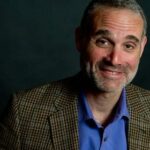Arnie Kozak on how subversive mindfulness meditation is to our cultural norms of healing and medicine.
The cover story in the new issue of Buddhadharma is about pain and how mindfulness meditation can help to alleviate the suffering associated with it.
That doesn’t necessarily fit with what many of us have been told. Madison Avenue — along with a culture that, overall, has a very low threshold for enduring the normal vicissitudes of everyday life — has perpetuated a myth: If you have a condition there is a product for you. Just ask your doctor if this pill is right for you. After all, you wouldn’t want to be suffering while everyone else in the world is enjoying their birthright of freedom from pain, discomfort, and inconvenience.
Discomfort and pain heighten our sense of FOMO (fear of missing out). Everyone else may be enjoying ease while we suffer. This perception compounds suffering. The Buddhadharma article talks about the Buddha’s classic metaphor of the two arrows. We in the West, especially those of us pursuing the dharma, are also at risk for a third arrow.
The first arrow is the reality of loss and pain that we experience on a daily basis: we grow older, get sick, and lose loved ones. We may also have a chronic pain condition. The second arrow is our relationship to these misfortunes of life. We resist the pain. This is like stabbing ourselves with another arrow. The Buddha’s insight of the second arrow is now being backed up by some of the pain research discussed in the Buddhadharma feature.
This is a good news/bad news scenario. Bad because we suffer unnecessarily; good because we can do something about it.
Yet, for many of us, there may be a third arrow of self-judgment around the second arrow: “I meditate, so I shouldn’t succumb to such petty feelings;” “A good Buddhist wouldn’t suffer like this.” We need to be mindful how such self-judgments may sneak in the back door.
In an article I wrote for the journal Techniques in Regional Anesthesia and Pain Management, I articulated a four-level model for understanding and working with pain. This model is presented in the metaphor of a Four Story Building.
On the ground floor we experience the physical sensations of pain: nerve fibers specifically devoted to the perception of pain are firing. The meditation teacher S. N. Goenka called these signals “solidified, intensified, gross sensations.” On the second floor, our brains quickly recognize these sensations as pain and these “move up” to the third floor as the unpleasant experience of “ouch.” Pain, of course, hurts the way it does so that we make sure to pay attention to what is going on. In acute pain this may represent tissue damage or sudden illness. On the fourth floor, we think about the experience — in both adaptive and “storytelling mind” ways (that is: automatic, conditioned, anxiety-ridden).
This past Fourth of July, I was doing some belated spring-cleaning in my living room. I was moving large, heavy stereo speakers that have sharp metal spikes to secure them to the floor. I think you can see where this story is going. With an overexuberant grab I picked up one of the speakers by the spike, ripping the tip of my middle finger open. It went in deep and the pain was intense.
I’d like to say that as a vipassana meditator with twenty-one years on the cushion I met the experience with perfect equanimity. Alas, not at first. My initial reaction was one of disbelief and resistance. My dog was wondering why I was so angry and swearing like a sailor. All that resistance was, of course, provided by my storytelling mind.
After a few moments, equanimity prevailed. I ran cold water over the wound and applied first aid. The adaptive and practical part of my fourth floor mind asked, “Do I need stitches? Will the walk-in clinic be open or do I need to go all the way to the E.R.?”
There was nothing to do about the first arrow. The damage was done and required several stitches to repair. The second arrow only lasted a few seconds. The third arrow was never inserted. What I’d done was mindless and stupid, but as human beings we get to be mindless and stupid sometimes. I reminded myself of the quote, “Eternal vigilance is the price of liberty.”
That’s the Four-Story Building in action as it relates to an episode of acute pain. The experience only involved a momentary fluctuation of suffering. Once I accepted what happened, the pain sensations were just that: sensations on the ground floor of the building. When pain is chronic, however, we tend to spend a lot of time on the fourth floor, with the storytelling mind. The pain can become “my pain” and is laced with identification and attachment. With mindfulness we can learn to come down from the fourth floor to the ground floor by disentangling our attention from the story about the pain — which has a sorrowful history and awful projected future — into what is happening in the body right now. Chronic pain does not contain any new information so we can safely disengage the protective parts of our brain to dwell in the “solidified, intensified, gross sensations” that are happening now.
Coming out of the story and into the present moment of the body changes our relationship to suffering. These sensations are not yet identified even as pain, because that happens on the second floor. It’s neither pleasant nor unpleasant because that happens on the third floor. And if there is no story about the suffering there is nothing to sustain the suffering. This is how we can liberate ourselves from suffering associated with pain.
